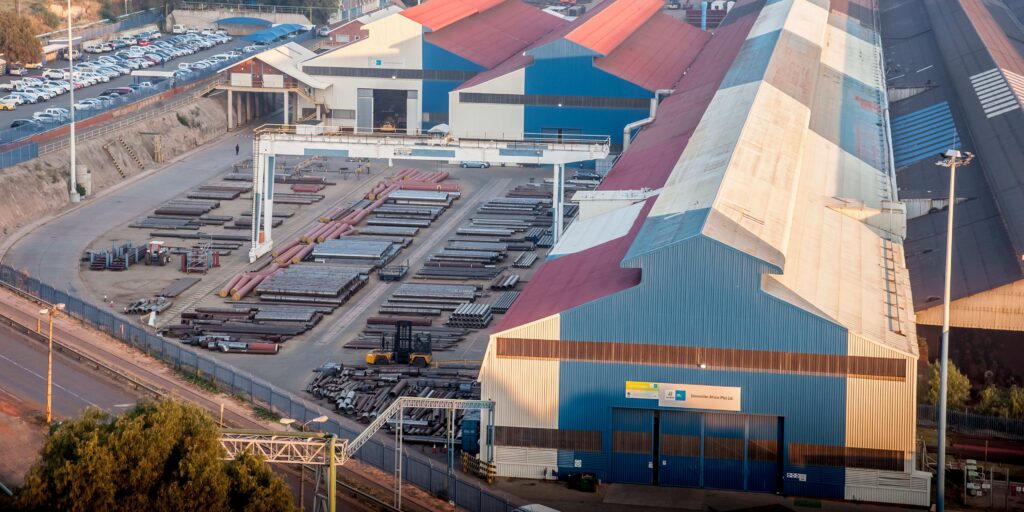Steinmüller Africa, the steam generation and high-pressure piping experts, celebrated 60 years of successful business in Africa on 7 November 2022. With a very humble beginning after its registration as a South African business in 1962, the company’s sole African location was a post box in South Africa which was checked only when the company’s first managing director, Werner Oehler, passed through South Africa en route to Australia from Germany. It was at this location that Steinmüller Africa received its first invitation to tender – an Eskom tender for its Grootvlei Power Station – and which led to the company building its first African head office, just outside of the Grootvlei Power Station, in the 1970s.
The company has since conducted ongoing boiler and high-pressure piping maintenance at the Arnot, Camden, Duvha, Hendrina, Matimba, Kriel, Tuthuka, Matla, Majuba, Grootvlei and Komati power stations. Its milestones are many and the company’s development is linked to South Africa’s industrial growth. The forerunners of this development were the building of boiler plants at Hendrina, Kriel, Duvha, Thuthuka, Majuba, and Mathimba power stations from 1967 through to the early1980s.
The 1990s saw Steinmüller Africa increase its South African footprint with the Sasol rejuvenation project, the replacement of make-gas boilers at Mossgas and Iscor blast furnaces. It also expanded its African footprint by undertaking work for the SAPPI Mill in Swaziland and conducted the refurbishment of the Zimbabwe Iron and Steel Company (ZISCO) plant. The South African-based entity took its footprint to Europe where it was contracted to fabricate PF boilers in Iskenderun, Turkey. The company, between 2004 and 2010, also undertook the return to service of mothballed plants at the Camden, Komati and Grootvlei power stations, and began fabrication of boilers and high-pressure pipework at these plants.
In addition to its work for ZISCO and the Zimbabwe Electricity Supply Authority (ZESA), Steinmüller Africa also has a footprint in Botswana, Mozambique and Namibia.
Karin Kaempffer, Executive GM: Human Capital Management at Steinmüller Africa, states that the company’s progression has been linked to South Africa’s industrial development. “Initially – in the early to mid-90s – our technical expertise was overseas-based and our offering to the African market was largely based on our local capabilities.” He adds that Steinmüller Africa now employs advanced engineering tools in its South African-based design office and has invested significantly in automated welding technologies at its fabrication facilities. “Both of these developments are aligned to our drive to improve productivity, shorten lead times and be a premier utility boiler and steam piping service provider on the African continent,” he says.
Industries that have benefitted from Steinmüller Africa’s progression on the continent and beyond include power generation, pulp and paper, chemical and petrochemical, and mineral beneficiation. “Our growth and sustainability, however,” says Kaempffer, “has remained within the power generation and chemical sectors. “Our expertise focuses on steam generation and reticulation, with an emphasis on complex, efficient high-temperature and high-pressure steam, meaning we are capable of providing solutions across the entire utility sector, where fuel efficiency is paramount.”
Steinmüller Africa, which has supported the lion’s share of leading power generation and chemical utilities in South Africa, was one of the earliest companies to undertake transformation and localisation activities in line with the B-BBEE scorecard and has been a Level 1 contributor over the past several years. “We are proud to be a highly ethical organisation and a preferred employer in our sector,” says Surname. “We have trained and produced a significant number of artisans and technicians for the South African industry.”
In addition to its B-BBEE rating and local skills development, Steinmüller Africa has contributed significant funding to 24 tertiary institutions across Africa to benefit science and technology undergraduates.
“We have covered a great amount of ground over the past 60 years, both geographically and on the innovation front,” Kaempffer concludes. “We look forward to another 60 years of growth, to the betterment of our company, the communities in which we work, and the industrial sectors we serve.”



